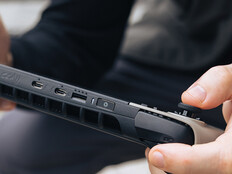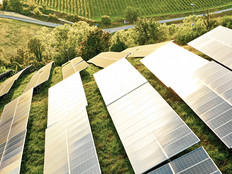Picture Purrrfect
For the staff at the Loudoun County Department of Animal Care and Control in Virginia, every picture tells an important story.
In fact, Mark Stacks, a county animal control officer, says digital photography is now an integral part of the department's daily work. The animal care staff and field control officers use digital cameras for just about everything -- from pictures that the department posts on its website to advertise animals available for adoption, to photos that serve as evidence in animal abuse cases.
"We take photos as much as possible," says Stacks. "It's especially important to take pictures of injuries so we can prove to a judge that an animal was abused."
The department's staff of eight field workers use a mix of 8.2 megapixel Sony Cybershot DSC-S650 and 7.1 megapixel Olympus FE-210 cameras. Each camera has a 1-gigabyte memory card, which is typically enough local storage for the field workers.
"We save the photos on our notebook computers, so if we need to e-mail a photo to the chief or an attorney, we can do it right from our field vehicle," Stacks explains. "Our group also uses video cameras as well for some of the bigger cases."
Projected U.S. sales of digital cameras in 2009, according to IDC.
Laura Rizer, the agency's community outreach manager who also manages its website, burned many of the old digital photos onto a CD about two years ago to take the storage load off the network. "Since most of the photos get posted on the web, another way I manage the storage load on our server is to keep the file sizes small; usually 320x240," she adds.
Set the Scene
Tim Brett, a senior manager for research group Input's state and local information services, says the most popular applications for digital cameras by state and local governments are in law enforcement and public safety, and at motor vehicles departments for driver's licenses.
Digital cameras are so inexpensive now, Brett says, that for $100 to $200 most agencies can buy a camera fairly easily without having to go through the procurement process. They are available to state and local governments on the GSA schedule as well, he adds.
"Governments are also using digital cameras to inventory properties, especially after the real estate bust with all the foreclosures and abandoned properties," he says.
"Field workers can take before-and-after pictures to track a neighborhood's progress," explains Brett, who adds that governments also find such photos valuable in the aftermath of a disaster when people want to document damage for insurance claims.
The cameras are also used at environmental agencies to monitor air quality and visibility, and by libraries and archives to catalog historical information.
The Georgia Archives uses high-end digital cameras to capture and store images of maps, plans and bound materials, and 8-megapixel Canon SLR cameras for the agency's many lectures and events.
Christine Wiseman, the agency's preservation services manager, says the agency has more than 800,000 stored images that are searchable online, many of which were captured by the digital cameras.
"While we still do photocopying, more and more we'll take a photo of an item," Wiseman says.
"We really look at digital cameras as another type of scanner," she explains, adding that the cameras come in handy for making copies, thus reducing handling of fragile documents and photos that could be damaged if they were photocopied.
Loeghmon Nejad, the Georgia Archives' LAN engineer, says the agency stores all the digital images in two dedicated EMC storage area network devices. He says to manage the added network traffic from all the digital images, the agency upgraded to a gigabit network a couple of years ago. "Ever since then, the bandwidth levels have been adequate," Nejad adds.
Dream Job
Ryan Holloway, a photographer at Miami-Dade County, Fla., has what many might consider a dream job. When he's not taking pictures of officials at groundbreaking and ribbon-cutting ceremonies, he's outside taking photos for the county's tourism office.
"We spend a lot of time taking nature and landscape shots around the Miami area," explains Holloway, who uses a Nikon D700 and a Nikon D2x. "Many of the shots are of the Everglades and the bay."
Tech to Depend On
Digital photos may be a staple at the Loudoun County Department of Animal Care and Control in Virginia, but the agency also depends on Panasonic Toughbook rugged notebooks.
Mark Stacks, a county animal control officer, says the Toughbooks let the staff do more of its paperwork in their vehicles, which keeps them out of the office and in the field working on cases roughly an extra hour every day.
"The computers just make us more efficient," Stacks says. "We have a database that stores all the information about the animals we track, so we can drive up to a house and retrieve a report and be ready to handle a case on the spot," he adds.
The animal control officers use technology on many other fronts. Now that more pet owners put microchip implants in their pets, one of the first tests the officers will run is a microchip scan of an animal. The field officers also rely on web-based maps for directions and fill out applications for search warrants electronically; information they put on thumb drives and then submit to the legal department.
"We used to print everything out and hand them paper," says Stacks. "Now we just hand them the thumb drives," he explains. "We use technology for anything we can to better serve the community and the animals."








